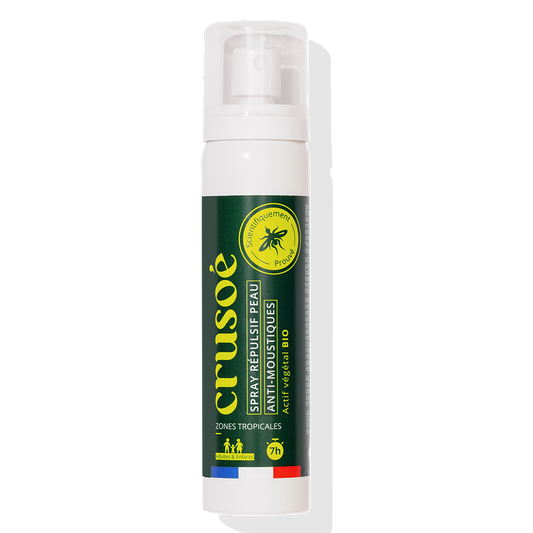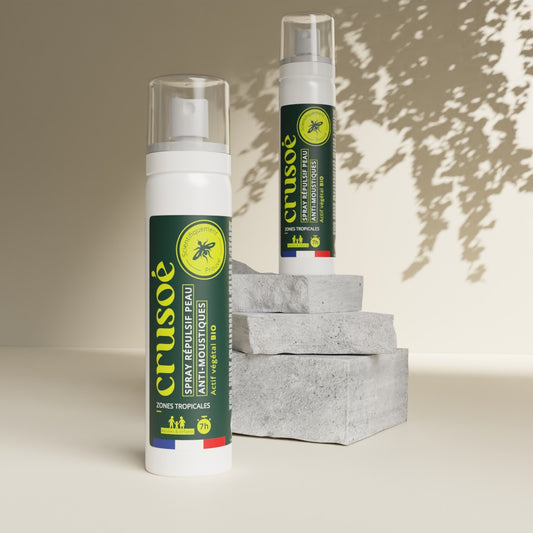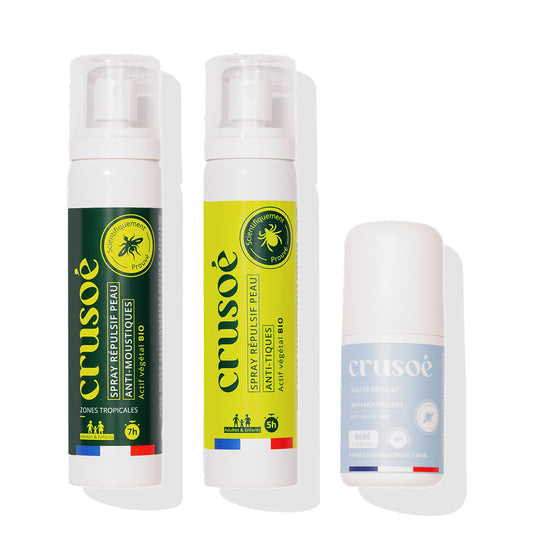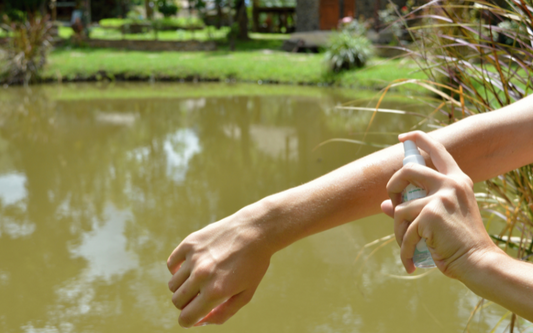Who has never dreamed of a world without mosquitoes? Indeed, if mosquitoes were to disappear, it would be difficult to recognize that we would miss them; especially because of the many diseases they carry, such as malaria, which causes 247 million illnesses and 1 million deaths each year, chikungunya, dengue fever, yellow fever, Zika virus disease, and West Nile virus. 1
However, only a few hundred species of mosquitoes, out of the 3,500 recorded, attack humans, and only female specimens and when their eggs are developing.²
In addition, mosquitoes, whether or not they are vectors of diseases for humans, play multiple roles in ecosystems , the ecological importance of which is often overlooked by the general public.
Mosquitoes have been present on Earth for more than 100 million years and are now distributed across all continents, in both aquatic and terrestrial ecosystems. They have thus evolved jointly with many species of both animals and plants. They have therefore become essential links in many food chains, and act as consumers, prey and decomposers.
- Adult mosquitoes feed primarily on plant sugar found in the form of floral nectar. In fact, mosquitoes cannot survive without consuming nectar even if vertebrate blood is available to them. 3 They feed mainly at dusk, which is difficult to observe, and have therefore long been wrongly considered as simple "nectar thieves". We now know that during their search for floral nectar, mosquitoes participate in the pollination of thousands of plants.⁴

- They can be exclusive pollinators of certain plants , meaning that these plants could not reproduce without mosquitoes and would disappear. This is the case of the flower of Burmannia lutescens, which has a very long pollen tube that only the mosquitoes' probioscis can reach. 3
- They can also be co-pollinators with other Diptera . For example, Aedes aegypti, a cousin of the tiger mosquito, is essential for the pollination of certain orchids. 5
- And they are most often generalist pollinators , like Culex pipiens, the common mosquito, which helps pollinate certain flowers, like those of Tansy. 4
Well known, the additional source of food for the adult mosquito is the blood of vertebrates. Although this mode of feeding is a real nuisance for humans, mosquitoes play a significant role in the Arctic. For example, mosquitoes are able to regulate the population of caribou, which destroy lichens, trample the soil and attack wolves.
- In the larval stage, mosquitoes degrade organic plant matter, consume microscopic algae and microbes. The larvae are therefore decomposers of organic matter. By carrying out this function, they participate in the production of nutrients for plants and therefore in their growth. For example, mosquito larvae are able to live in the tubes of certain carnivorous plants, Sarraceniaceae, and participate in their growth by decomposing other trapped insects. 6
- Mosquitoes are also a considerable food source, both as larvae and as adults in aquatic and terrestrial ecosystems. The larvae are eaten by many species of birds and fish. For example, mosquito fish, or Gambusia affinis , is an exclusive predator of mosquito larvae and would disappear if mosquitoes were eradicated.1,2 Mosquitoes, if they reach the adult stage, are the main food source for many species of birds, bats, frogs, lizards, spiders and other insects. Considering the biomass represented by mosquitoes in the Arctic, of nearly 44,000 tons, it has been estimated that the population of migratory birds, coming to nest in the Tundra, would decrease by 50% without mosquitoes.¹ In addition, French researchers have shown the impact of the decrease in mosquito populations in the Camargue after the use of a microbial insecticide. The population of Camargue swallows saw the number of births decrease by 33%. 7

At the same time, populations of spiders and dragonflies have also fallen, while those of flying ants have declined. 8 The Camargue ecosystem has therefore been disrupted following the drastic reduction in its mosquito population.
So The eradication of mosquitoes could therefore leave a far from negligible impact on the environment. leaving a plant without a pollinator, a predator without prey, and a lack of decomposers.
References:
[1] J. Fang, Nature , 2010, 466, 432–434.
[2] DAH Peach, The bizarre and ecologically important hidden lives of mosquitoes , http://theconversation.com/the-bizarre-and-ecologically-important-hidden-lives-of-mosquitoes-127599 .
[3] DAH Peach and G. Gries, Entomologia Experimentalis et Applicata , 2020, 168, 120–136.
[4] DAH Peach and G. Gries, Arthropod-Plant Interactions , 2016, 10, 497–506.
[5] C. Lahondère, C. Vinauger, RP Okubo, GH Wolff, JK Chan, OS Akbari and JA Riffell, PNAS , 2020, 117, 708–716.
[6] P. Armbruster, WE Bradshaw and CM Holzapfel, Evolution , 1997, 51, 451–458.
[7] B. Poulin, G. Lefebvre and L. Paz, Journal of Applied Ecology , 2010, 47, 884–889.
[8] B. Poulin, Acta Oecologica , 2012, 44, 28–32.













